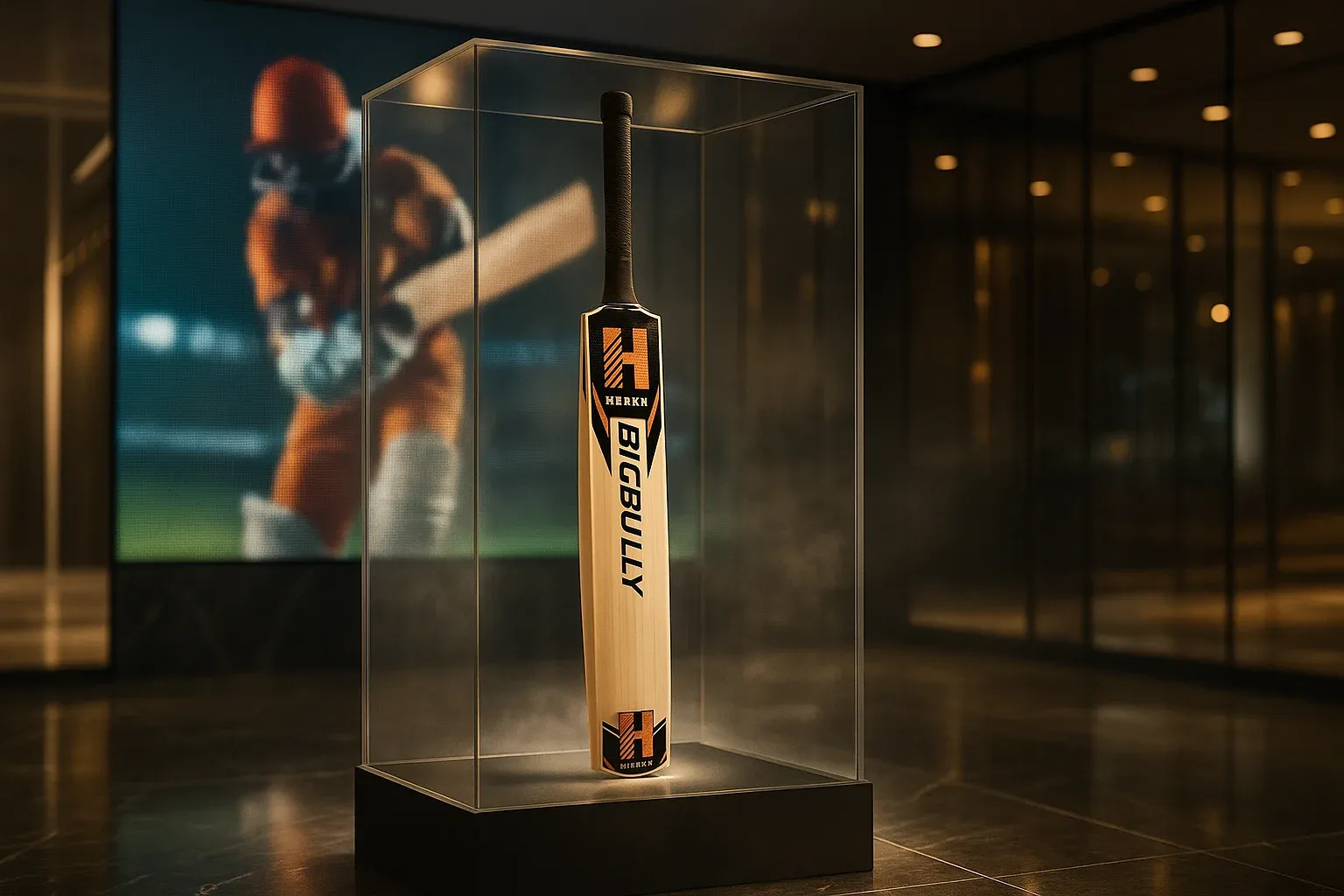
For centuries, the cricket bat has been synonymous with one material: willow. From the legendary English willow used by professionals to the more affordable Kashmir willow for amateurs, this wood has dominated the sport since cricket’s inception. But as the game evolves—with T20 fireworks, high-speed deliveries, and modern training tools—so too does the demand for innovation in equipment.
Enter the era of future-tech bats: designs that move beyond traditional willow to incorporate advanced materials, scientific engineering, and even digital technology. The bat of tomorrow won’t just be about weight and grains—it will be about power optimization, player data, and durability.
In this blog, we’ll explore how cricket bats are moving beyond willow and into innovation.
1. Why Willow Dominated for Centuries
Before diving into the future, it’s important to understand why willow has reigned supreme for so long:
- Natural Flexibility: Absorbs shock while delivering rebound power.
- Durability: Handles high-speed impacts without splintering.
- Lightweight: Enables batsmen to generate both bat speed and control.
- Workability: Allows craftsmen to shape bats into traditional and modern profiles.
But willow has its limitations:
- It’s expensive, especially English willow.
- It requires knocking in and maintenance.
- It can wear down quickly under heavy usage, especially in power-hitting formats.
These limitations have inspired research into next-gen alternatives.
2. Carbon Fiber Reinforcements
Carbon fiber is already common in tennis rackets, golf clubs, and bicycles—and now it’s making its way into cricket.
- Enhanced Durability: Reinforced edges and spines can withstand repeated impacts.
- Lightweight Strength: Helps reduce weight without losing power.
- Consistent Performance: Carbon doesn’t warp like wood, ensuring a longer-lasting “sweet spot.”
Example: Some modern experimental bats use carbon layers fused with willow, combining tradition with innovation.
3. Aluminum and Composite Experiments
Back in the late 1970s, Australian player Dennis Lillee famously walked out with an aluminum bat. Though banned due to concerns about fairness and pitch damage, it opened the door to future experiments.
- Aluminum Bats: Extremely durable but lacked the natural feel of willow.
- Hybrid Composites: A mix of synthetic materials with natural wood to balance tradition and technology.
- Modern Potential: With today’s advanced composites, cricket might see bats with synthetic cores wrapped in willow veneers.
4. 3D Printing and Custom Profiles
Imagine ordering a bat that’s perfectly tailored to your height, grip style, and playing technique.
- 3D Printing: Allows manufacturers to create prototypes and even full bats with extreme precision.
- Personalized Profiles: Weight distribution and balance could be optimized for individual players.
- Rapid Innovation: Instead of waiting weeks for hand-crafted models, players could get instant customization.
5. Smart Bats with Embedded Sensors
The next frontier is digital integration.
- Embedded Sensors: Track bat speed, impact location, and swing angle.
- Real-Time Feedback: Data synced to apps for training analysis.
- Performance Insights: Coaches and players can identify areas for improvement instantly.
Example: The Power Bat (launched with Intel) already uses a sensor to provide live batting analytics. This is just the beginning.
6. Eco-Friendly Alternatives
With concerns over sustainability, bat makers are also exploring greener options:
- Bamboo Bats: Recent experiments showed bamboo offers higher density and power compared to willow.
- Sustainable Composites: Materials that reduce reliance on limited willow resources.
- Recycled Polymers: Using advanced eco-friendly polymers for reinforcement without sacrificing playability.
Impact: These innovations could make cricket more accessible worldwide by lowering costs and increasing bat availability.
7. Engineering the Sweet Spot
Traditionally, the sweet spot has been a result of craftsmanship. But with modern tech:
- Computer Simulations: Engineers can map stress points and optimize the sweet spot for maximum power.
- Multi-Zone Sweet Spots: Future bats may have extended hitting zones, making mishits less punishing.
- Adjustable Balance: Players could even tweak balance points to suit conditions (like a golf club with adjustable weights).
8. The Future of Power-Hitting
As T20 cricket continues to grow, bats will need to evolve for maximum hitting power:
- Thicker Edges Without Extra Weight: Achieved through lightweight materials.
- Shock-Absorbing Handles: Reducing vibration, protecting players from injury.
- Energy Return Tech: Materials that act like springs, returning more power into the ball.
9. Challenges Ahead
While these innovations sound exciting, there are challenges:
- Regulations: The MCC (Marylebone Cricket Club) has strict rules to maintain fairness. Overly powerful bats could tilt the balance too much toward batters.
- Acceptance: Traditionalists still prefer willow and craftsmanship over machines.
- Cost: High-tech bats may be expensive, limiting accessibility for grassroots cricket.
10. What the Future Looks Like
The cricket bat of tomorrow may be a hybrid creation—part willow, part composite, with embedded sensors and AI-driven design.
It won’t just be about hitting sixes; it will be about data-driven performance, durability, and accessibility. Just as tennis and baseball embraced innovation, cricket too is on the verge of a bat revolution.
Conclusion
From humble willow logs to carbon composites, bamboo alternatives, and smart sensor bats, the cricket bat is undergoing its biggest transformation in centuries. While tradition will always hold its place, innovation promises to make cricket bats more durable, more powerful, and more personalized than ever before.
As the game evolves, one thing is certain—the bat will continue to be at the heart of cricket, only smarter, stronger, and more advanced.
zs Upgrade to the Future of Cricket
Discover our range of innovative cricket bats, designed with modern profiles, superior balance, and unmatched power. Step into the future of batting today.